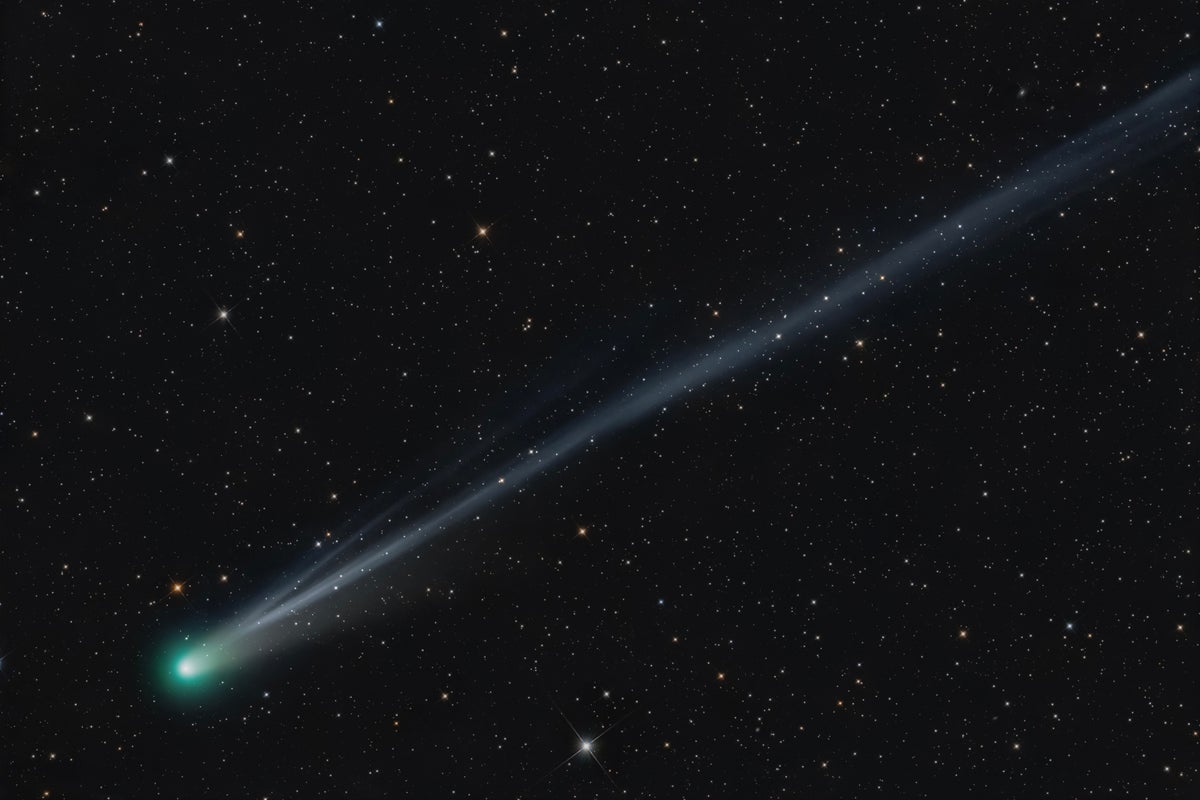Comets have long fascinated humanity, captivating observers with their glowing comas and spectacular tails streaking across the night sky. Yet not all comets put on a dazzling show; some brighten brilliantly, while others appear faint or disappoint observers. This variability arises from a combination of factors including their composition, orbital paths, distance from Earth and the sun, and sometimes sheer unpredictability. Understanding why some comets shine spectacularly while others fizzle involves delving into their nature, behavior, and the intricacies of their journeys through our solar system.
Currently, two comets—C/2025 A6 (Lemmon) and C/2025 R2 (SWAN)—are visible in the night sky. Though they share some similarities, such as both passing through the inner solar system before heading back out toward the outer planets, their differences highlight the complexity of cometary behavior. Lemmon follows a highly inclined orbit, tilted more than 140 degrees relative to the plane in which most planets orbit, and takes roughly 1,300 years to complete a revolution around the sun. In contrast, SWAN’s orbit aligns closely with the planetary plane and has a shorter orbital period of about 650 years. These distinctions suggest the two comets have very different dynamical histories; for example, SWAN may have had gravitational interactions with Jupiter or other planets that altered its orbit, bringing it closer to the sun more frequently.
Despite their current visibility, neither Lemmon nor SWAN is particularly bright compared to some comets seen in recent decades. In mid-2020, Comet NEOWISE (C/2020 F3) was visible to the naked eye and provided a spectacular display. Even more striking was Comet Hale-Bopp (C/1995 O1) in 1997, which was so luminous that it could be seen from inside a well-lit room through a window. The stark contrast between these comets raises the question: what causes some comets to dazzle while others barely register?
One of the most straightforward factors affecting a comet’s brightness is its distance from Earth. The closer a comet comes to us, the brighter it generally appears. A prime example is Halley’s Comet (1/P Halley), the most famous of all. During its 1910 visit, Halley’s Comet approached within 25 million kilometers of Earth and shone brilliantly in the sky. However, in 1986, its return was much less impressive because it was farther away and the viewing geometry was less favorable, resulting in a dimmer appearance. Even though it was a landmark event for many, including astronomy enthusiasts, the comet did not dazzle as it had nearly a century earlier.
The comet’s proximity to the sun is another critical factor. As a comet nears the sun, solar heating warms its icy surface, causing volatile materials—such as water ice, carbon dioxide, and other frozen gases—to sublimate directly from solid to gas. This process releases gas and dust, which form the comet’s glowing coma, a vast, fuzzy envelope surrounding the nucleus. The coma can be tens of thousands of kilometers wide, far exceeding the size of the comet’s solid nucleus, which typically measures only a few kilometers across. The gas and dust reflect sunlight, making the comet appear bright to observers on Earth. In addition, solar wind and radiation pressure blow this material away from the sun-facing side, forming the iconic tail that can extend millions of kilometers.
However, even with favorable orbits and proximity to the sun and Earth, predicting a comet’s brightness is notoriously difficult. Astronomers often find that two comets with seemingly similar orbits can behave very differently. Renowned comet hunter David Levy famously compares comets to cats: “they have tails, and they do precisely what they want.” This unpredictability largely stems from the comet’s internal structure and composition, which can vary widely.
Comets are composed of ice and rock in varying proportions and are generally classified into two broad categories based on their orbital periods: short-period comets and long-period comets. Short-period comets complete an orbit around the sun in less than 200 years and tend to have orbits that keep them relatively closer to the sun. For example, Halley’s Comet crosses the orbit of Neptune but does not venture far beyond it. Long-period comets, on the other hand, can have orbits lasting thousands or even millions of years, taking them far

